Do you have a question about the Blomberg GSS 1380 and is the answer not in the manual?
Ensure water intake hose is not bent or squeezed and drainage hose is firmly seated.
Use equal quality, max 4m length for drainage hose extensions.
Drainage height must be 50-100 cm; use hose clamps.
Connect to cold/warm water (max 60°C), not open devices. Check pressure.
Lowest 0.3 bar, highest 10 bar. Contact technician for low pressure.
Ensure hose is not bent, use 3/4" tap, check for leaks, close tap after rinse.
Check for transport damage, contact supplier if damaged, never install damaged machine.
Ensure correct electrical connections, grounded socket, and accessible plug.
Properly connect water inlet and drainage hoses as per instructions.
Dispose of packaging and old machine according to regulations.
Check machine for transport damages. Never install if damaged.
Ensure proper grounding, check power supply data, disconnect from mains.
Load dishwasher as suggested and do not overload baskets.
Avoid pre-washing with excess detergent; clean spilled rinse aid.
Clean filters and ensure the relief hose is properly placed.
Ensure items are dishwasher safe; avoid aluminium and silver items.
Check salt container lid, water hardness, detergent storage, and loading.
Do not use extension cables; use original plug; ensure plug is accessible.
Supervise children, keep detergents away, water is not drinking water.
Use for household dishes only; do not open door during operation.
Disconnect from mains for repairs; do not pull cable; turn off water supply.
Identifies key components of the dishwasher, including housing and baskets.
Explains the function of various buttons and indicators on the control panel.
Remove coarse dirt, use pre-wash or run cycle without detergent.
Check system grounding to prevent static electricity damage.
Rust-sensitive cutlery or dishes are not suited for dishwashers.
Ensure dry dispenser, proper detergent fill, correct lid closure, and avoid clumping.
Dishwashers require soft water; use salt to prevent lime scale.
Use a test strip or contact local water company to determine water hardness.
Procedure to set the appliance's water hardness level via buttons.
Smell disappears after a few washing runs.
Clean all strainers and filters as described in the manual.
Remove dirt, run pre-wash program, keep door closed to prevent smells.
Choose low temp program, use less detergent, check water hardness.
Check salt container lid; salt can damage metal surfaces.
Use only special dishwasher salt; avoid coarse grain or table salt.
Open cap, fill with water (first use), add salt using funnel, close cap.
Check loading, rinse aid, unloading time, program selection, and cutlery quality.
Select higher temperature program; store detergents properly.
Increase rinse aid supply or refill the rinse aid dispenser.
Check loading, program, spray arms, filters, and detergent/rinse aid levels.
Rinse aid improves rinsing and prevents watermarks; use dishwasher-specific products.
Press the lock to open the dispenser lid.
Adjust the dispenser regulator (levels 1-6) based on visible watermarks or streaks.
Types of detergents: phosphate/chlorine, phosphate/no chlorine, neither. Use salt with phosphate-free detergents.
Store detergents cool/dry, out of reach of children; use correct amount.
Combined detergents may offer satisfactory results under specific conditions.
Check product specs; follow packet instructions; place tablets in dispenser.
Regular cleaning ensures longer product life and reduces recurring problems.
Use a gentle household cleaner for the outside and door seals.
Remove and clean main, coarse, and micro filters thoroughly under running water.
Lists items like rust-sensitive steel, wooden handles, non-heat resistant plastics.
Remove food leftovers, place items with openings downwards, avoid overloading.
Use for plates, bowls, pots; folding plate supports provide more room.
Load with dessert plates, cups, glasses; adjust height setting as needed.
Place cutlery with sharp tips and edges horizontally in the upper basket.
Remove spray arms, clean nozzles under running water to clear blockages.
Clean filter in water inlet hose to prevent dirt deposits from pipes.
Check plug, fuses, water supply, door closure, and On/Off button.
Ensure water intake hose is not bent or squeezed and drainage hose is firmly seated.
Use equal quality, max 4m length for drainage hose extensions.
Drainage height must be 50-100 cm; use hose clamps.
Connect to cold/warm water (max 60°C), not open devices. Check pressure.
Lowest 0.3 bar, highest 10 bar. Contact technician for low pressure.
Ensure hose is not bent, use 3/4" tap, check for leaks, close tap after rinse.
Check for transport damage, contact supplier if damaged, never install damaged machine.
Ensure correct electrical connections, grounded socket, and accessible plug.
Properly connect water inlet and drainage hoses as per instructions.
Dispose of packaging and old machine according to regulations.
Check machine for transport damages. Never install if damaged.
Ensure proper grounding, check power supply data, disconnect from mains.
Load dishwasher as suggested and do not overload baskets.
Avoid pre-washing with excess detergent; clean spilled rinse aid.
Clean filters and ensure the relief hose is properly placed.
Ensure items are dishwasher safe; avoid aluminium and silver items.
Check salt container lid, water hardness, detergent storage, and loading.
Do not use extension cables; use original plug; ensure plug is accessible.
Supervise children, keep detergents away, water is not drinking water.
Use for household dishes only; do not open door during operation.
Disconnect from mains for repairs; do not pull cable; turn off water supply.
Identifies key components of the dishwasher, including housing and baskets.
Explains the function of various buttons and indicators on the control panel.
Remove coarse dirt, use pre-wash or run cycle without detergent.
Check system grounding to prevent static electricity damage.
Rust-sensitive cutlery or dishes are not suited for dishwashers.
Ensure dry dispenser, proper detergent fill, correct lid closure, and avoid clumping.
Dishwashers require soft water; use salt to prevent lime scale.
Use a test strip or contact local water company to determine water hardness.
Procedure to set the appliance's water hardness level via buttons.
Smell disappears after a few washing runs.
Clean all strainers and filters as described in the manual.
Remove dirt, run pre-wash program, keep door closed to prevent smells.
Choose low temp program, use less detergent, check water hardness.
Check salt container lid; salt can damage metal surfaces.
Use only special dishwasher salt; avoid coarse grain or table salt.
Open cap, fill with water (first use), add salt using funnel, close cap.
Check loading, rinse aid, unloading time, program selection, and cutlery quality.
Select higher temperature program; store detergents properly.
Increase rinse aid supply or refill the rinse aid dispenser.
Check loading, program, spray arms, filters, and detergent/rinse aid levels.
Rinse aid improves rinsing and prevents watermarks; use dishwasher-specific products.
Press the lock to open the dispenser lid.
Adjust the dispenser regulator (levels 1-6) based on visible watermarks or streaks.
Types of detergents: phosphate/chlorine, phosphate/no chlorine, neither. Use salt with phosphate-free detergents.
Store detergents cool/dry, out of reach of children; use correct amount.
Combined detergents may offer satisfactory results under specific conditions.
Check product specs; follow packet instructions; place tablets in dispenser.
Regular cleaning ensures longer product life and reduces recurring problems.
Use a gentle household cleaner for the outside and door seals.
Remove and clean main, coarse, and micro filters thoroughly under running water.
Lists items like rust-sensitive steel, wooden handles, non-heat resistant plastics.
Remove food leftovers, place items with openings downwards, avoid overloading.
Use for plates, bowls, pots; folding plate supports provide more room.
Load with dessert plates, cups, glasses; adjust height setting as needed.
Place cutlery with sharp tips and edges horizontally in the upper basket.
Remove spray arms, clean nozzles under running water to clear blockages.
Clean filter in water inlet hose to prevent dirt deposits from pipes.
Check plug, fuses, water supply, door closure, and On/Off button.
| Type | Freestanding |
|---|---|
| Height | 85 cm |
| Width | 60 cm |
| Depth | 60 cm |
| Washing Performance Class | A |
| Delay Start | Yes |
| Dimensions (H x W x D) | 85 x 60 x 60 cm |
| Washing Programs | Intensive, Economy |

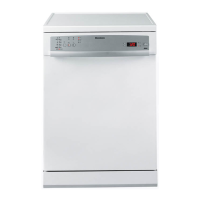
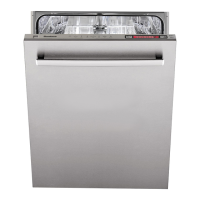
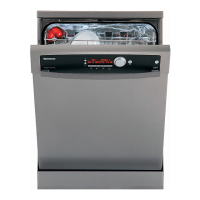
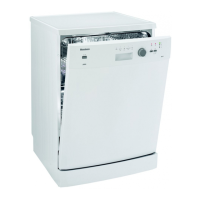


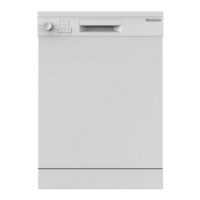




